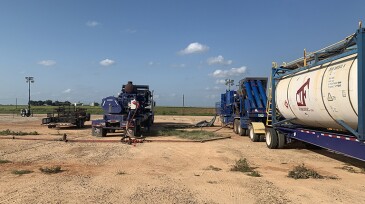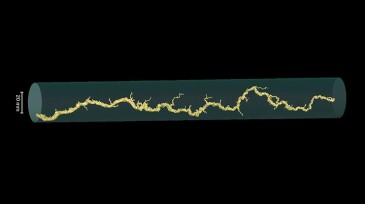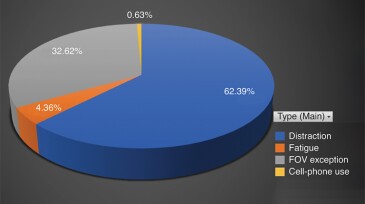case study
-
Carbonate reservoirs require effective acid stimulation to improve well productivity. For long horizontal wells, a complicating factor has previously been the difficulty of controlling acid placement along the reservoir section. The Smart Liner concept uses a number of small holes spaced in such a way so as to distribute the acid evenly along the reservoir interval.
-
The study assessed the CO2 footprint and NO2 emissions for different drill-cuttings treatment alternatives. The values were then used to create an emissions calculator that can be applied to projects to clarify the actual potential for emissions reduction within the drilling-waste-management process.
-
A rigless chemical frac-hit remediation process was designed to address the damage mechanisms of capillary phase trapping, reduced hydrocarbon relative permeability, paraffin deposition, and minor scale deposition.
-
The paper provides insight into managing reserves and resource information during a merger through description of a case study.
-
HCl acid stimulation of carbonate production requires the retardation of the HCl-carbonate rock reaction to achieve the optimum balance between total fluid used and the enhancement of well production. The described investigation was done offshore Sarawak using Indiana Limestone cores.
-
This paper discusses various best practice technical strategies for decommissioning which can be applied in the Southeast Asia region, and throughout the world. The strategies proposed can result in an estimated operator saving of more than 30% over the entire decommissioning execution expenditure. The processes discussed are included in the typical steps of prelimina…
-
Traditionally, wireline or logging-while-drilling formation-testing technology has been the most accepted means of reservoir fluid characterization. But when those fluids are contaminated by mud filtrate, acoustic data can be used for fluid characterization during downhole sampling to successfully track and quantify small changes in oil compressibility.
-
The application of an extended-release scale-inhibitor in approximately 70 vertical conventional wells in the Permian Basin has shown approximately three times better performance compared to the incumbent chemical.
-
The authors’ objective is to understand further how technology can support the prevention of driver fatigue and to explore driver beliefs related to fatigue and the technology designed to assist in fatigue avoidance.
-
A wellbore repair tool was successfully deployed to rectify collapsed tubing in a remote well off the coast of Papua New Guinea.










